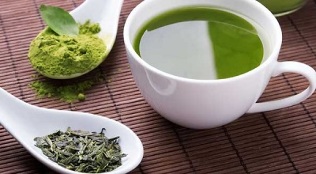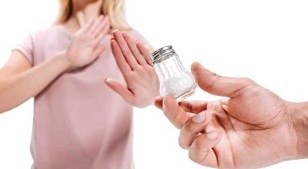The Japanese diet can be compared to a difficult test where you have to show the samurai willpower in losing weight. After passing through, not only will the thinness be felt, but also healthier. After reading the material, you will discover many new things about the "Japanese woman".
Japanese diet for weight loss

After finding extra pounds in yourself, immediately hurry to choose an appropriate weight loss regimen. The Japanese diet without salt is an effective way to lose weight.
The Japanese diet got its name from Japanese nutritionists. It is adapted for Europeans and bears no resemblance to national Japanese cuisine. However, it allows you to develop the right eating habits that are peculiar to the people of Japan.
The Japanese are known for their lean physique and long life expectancy, largely due to the diet they follow.
Advantages and disadvantages of the Japanese diet
Let's examine in more detail the pros and cons of such a diet. The 13-day Japanese diet has several advantages:
- is an effective option for weight loss. According to this scheme, you can reduce body weight by 8 or more kilograms.
- The reduction in salt intake has a positive effect: Excess fluid leaves the body and the swelling decreases. The cardiovascular system gradually returns to normal.
- There is a noticeable improvement in wellbeing. Reducing the amount of salty foods in the diet helps a person get rid of this bad habit.
- With vegetable protein you can stay slim and strengthen the immune system for a long time.
- The Japanese diet menu contains a selection of affordable products that can be bought in any supermarket.
- Such a weight loss course is relevant at any time of the year.
This weight loss system is harmful for several reasons:
- Daily coffee consumption can cause problems with the cardiovascular system, the central nervous system and the gastrointestinal tract (CNS and GI tract).
- The diet is unbalanced, very close to a hunger strike.
- Long breaks before meals can be the starting point for serious stomach problems.
- Many people find it difficult to get used to the diet.
The Japanese diet is one of the most popular methods of rapid weight loss.
Basic Japanese dietary rules
A set of rules for losing weight, e. g. B. a diet that helps improve your figure and physical fitness:

- eat exclusively from a special menu;
- Think about fasting days in advance.
- does not edit or change the order of the elements;
- gives up sweet, salty, starchy foods (except those permitted);
- try to drink your daily amount of pure water (1. 5 - 2 liters, depending on your weight);
- drink green tea after every meal, as black tea is forbidden;
- cook vegetables in a slow cooker or bake them in the oven in olive oil.
- It is permissible to repeat a similar diet every six months.
- It is necessary to take multivitamins, active dietary supplements that make up for the lack of nutrients in the body.
- You need to consult a specialist because the nutritional system has side effects.
- Psychological preparation is the key to any diet success. Japanese is no exception;
- Before you start, gradually exclude prohibited, especially harmful products from your menu.
- The original serving of vegetables and fruits will help satisfy the desire to eat a kind of "harmful" food and improve the mood when losing weight.
It is necessary to strictly adhere to the menu, without changing the order of the days or the range of products, strictly observing the rules of cooking.
Preparation for the Japanese diet
We strongly recommend not to skip this step as a sudden diet change is stressful for anyone, even if you opt for a gentler diet by Hayley Pomeroy.
A few tips to help you rebuild your body in new ways and lose weight:
- exclude all types of "harmfulness" (fried, sweet, flour, sauces, semi-finished products, instant foods) from the diet one week before the start of the diet;
- take a smaller plate - this will reduce the amount consumed by 20-25%;
- do not swallow at night, have dinner 3 hours before going to bed;
- drink the norm for clean water (1, 5-2 liters per day);
- Drink the first glass of water in small sips in the morning to activate your metabolism after sleep.
7-day menu for Japanese nutrition
A weekly 7-day Japanese salt-free diet consists of three meals a day: breakfast, lunch and dinner. All drinks are consumed without sugar.
An example of a balanced diet for every day:

- Start your breakfast with a cup of coffee or green tea. Boil 2 eggs for lunch, chop the Beijing coleslaw and carrots and season with vegetable oil. Then drink 1 glass of freshly made tomato juice. The dinner consists of boiled fish (150-200 g), 100 grams of Chinese cabbage and a spoon of olive oil.
- Start your first meal with a small rye toast and coffee / tea. Lunch consists of vegetable-based salad and baked fish (200 grams). For dinner, cook a small piece of beef (200 grams) + a glass of low-fat kefir.
- Natural unpackaged coffee - breakfast. Boil 1 hard-boiled egg for lunch, cut a carrot salad (small portion weighing 150 grams) and season with vegetable oil. Have an apple snack at the end of the day.
- A toast of rye bread is allowed for breakfast in addition to a cup of coffee. The second meal consists of an egg, 3 medium-sized carrots, and 10 grams of natural low-fat cheese. In the evening you eat fruit that is allowed on the menu.
- For breakfast, grate a carrot and season with a lemon wedge. Bake fish fillets for lunch. Squeeze a glass of juice out of the tomatoes. The dinner includes 2-3 unsweetened fruits (e. g. pear).
- Have a cup of weak green tea early in the day. At lunchtime, cook 300 g of chicken breast, chop a salad of carrots and cabbage (150 g). For dinner - 2 boiled eggs, grated carrot salad with a drop of oil.
- Rye croutons and a cup of tea are allowed for breakfast. Lunch consists of a small piece of boiled beef (200 grams) + an apple. Dinner - one of the recommended (no beef).
The 7-day Japanese diet and menu described above does not guarantee any significant weight loss. During this time, you can only remove excess water from the body.
This diet can be described as salt-free precisely because you drink a lot and do not consume any salty foods. The kilograms are literally washed out.
Japanese diet menu for 9 days
The following diet meal does not differ from the 7-day option, but two more days are added:
- Drink sugar-free coffee / green tea for breakfast. Second meal - 500 gr. Boiled chicken, a bowl of cabbage and carrot salad. The dinner consists of grated carrots, seasoned with sesame oil.
- Start your day with your usual drinks. The lunch snack consists of cooked chicken fillet (150 g), carrot-Peking salad, 2 eggs. Eat 2 of the allowed fruits in the evening.
13-day Japanese diet menu by day
A few more days are added to the Japanese diet menu:

- Cheer up with a cup of coffee in the morning. The lunch diet includes: a slice of cheese (10 grams), 1 boiled egg, a salad of grated carrot strips, cabbage. Snack on the "right" fruit for dinner.
- Early in the day - rye toast with green tea. For lunch, fry the zucchini in olive oil. Dinner can consist of two hard-boiled eggs, coleslaw, seasoned with lemon wedge and butter, boiled veal (150-200 grams).
- Have a cup of coffee and a crouton for breakfast. The second meal consists of 200 grams of fish (cooked or made in a slow cooker), mixed salad. Cook a slice of beef for dinner. Go to the grocery store for fresh kefir.
- After waking up - a cup of coffee. The daily diet consists of a couple of hard-boiled eggs and 150 grams of coleslaw. For dinner, fry or boil 200-300 grams of fish fillets.
- From the next day you will have to choose any day's menu and add 1 prohibited product. It is important to gradually abandon the two-week diet and not to uncontrollably ingest previously prohibited foods.
Fish, chicken, beef, eggs, cheese and kefir should be the basis of your menu.
If you have a sweet tooth, you can smell vanilla during your diet. It will lessen the urge to tear yourself away and have a sweet bun.
- boil oatmeal in water for breakfast (buckwheat, oatmeal);
- for lunch you can eat boiled rice with meat;
- introduces protein and vegetable snacks into your diet;
- salt and pepper your dishes little by little;
- The waiting time from such a diet is about 4 weeks, so you need to be patient.
Japanese Diet Food List
As part of this type of diet, it is necessary to consume low-fat and low-carbohydrate natural products:

- natural grain or ground coffee (accelerates metabolic processes in the body, normalizes blood pressure);
- white fish (only sirloin), as red fish is too oily;
- green tea (of course without any fruit additives);
- fresh fruits (except for high-sugar bananas and grapes). Prefer green apples with "acidity", pears, grapefruit, cherries. You can drink cocktails or smoothies;
- lean meat (beef, veal);
- Tomato juice that you made yourself in a blender. The shops sell a drink with a lot of salt;
- low-fat (or completely fat-free) fresh kefir;
- chicken or quail eggs;
- Chicken (sirloin), turkey;
- vegetable oil (olives or sesame seeds);
- still mineral water;
- vegetables (preferably Chinese cabbage, eggplant, zucchini, carrots);
- rye bread or croutons.
Forget about salt, sugar and spices (they make you eat more than you need to satisfy your hunger), leave smoked meat, baked goods, bananas and grapes in the store.
List of prohibited Japanese diets
The diet food contains a list of foods that should not be consumed.
To lose weight, you must give up the following positions:
- It is not recommended to add spices and herbs. Salting dishes is strictly prohibited.
- Don't drink alcohol while losing weight. They are a very high calorie product themselves.
- Remove flour, sweet and fatty foods from your diet.
- As mentioned above, avoid the two sugar-rich fruits (bananas and grapes).
Results

In such a short time (13 days) up to 15 kilograms (depending on the duration of the course and the initial weight) can be consumed. If you follow all the instructions, you are not replacing products, but strictly follow the established daily routine.
Note that with a balanced Japanese diet over 13 days, the menu will help improve metabolism, so weight loss will continue after the end. Drink plenty of water to improve the appearance of the skin and remove puffiness.
It is strictly forbidden to eat snacks and deviations from the suggested menu during the diet, otherwise the result will be far from the promised.
Contraindications
Japanese diet is a difficult option for improving the parameters of the figure, so it is not suitable for everyone. Again, it should be noted that you should consult a nutritionist before starting any diet.
The following list of prohibition factors for "Japanese women" is distinguished:
- is contraindicated during pregnancy and breastfeeding;
- Young people (under 18), older people should not limit their diet;
- general weakening of the immune system, colds, SARS, flu;
- are not acceptable for people with chronic diseases (cardiovascular, intestinal, kidney diseases).
- violation of the stool, nausea;
- postoperative period (regardless of the severity of the operation);
- mental, physical and emotional stress (e. g. upcoming contests, contests, submission of the report);
- If you feel faint and dizzy for a few days after starting the diet, you should refuse.
We analyzed the specifics of the Japanese diet for a week or more. Fresh vegetables, fruits, mainly fish, moderate oil consumption, fermented milk products, salt repellency are the main foods of this type. It can be assumed that this is the key to the longevity and harmony of the Japanese.






























